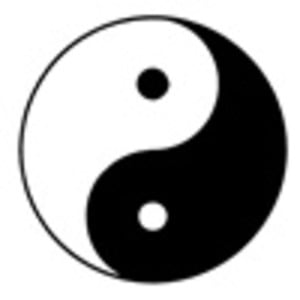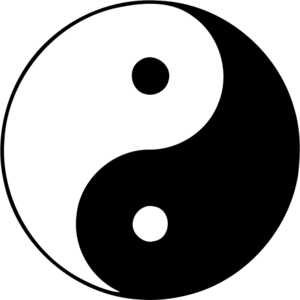In this article I will try to describe the 6 main principles behind the Yin Yang philosophy. Most people neglect that their major challenge in life is to seek the Balance in their lives. This is what the Yin Yang concept teaches us. Let’s start!
First of all, let me clarify that I study Eastern philosophy for quite some years now and I believe I am in the position to try to explain with simple words what the Yin Yang philosophy is. I will try to do that with simple words and phrases so anyone can tap into the powers of this concept. (Just in case you are interested I got all my knowledge from astrologer Duan Minh)
Principle #1: Yin is the opposite of Yang and Yang is the opposite of Yin
Everything in our Universe has its opposite (this is what science claims too) – This is never absolute though, only comparative. No one thing is completely Yin (Evil, White) or completely Yang (Good, Black). Each contains the seed of its opposite and they can be transformed from one form to the other depending on many factors. For example, cold can turn into hot; or the season changes throughout the year. Also, one cannot exist without the other. There’s not absolute Evil or absolute Good.
Principle #2: Yin and yang depend on each other
As mentioned, nothing is totally Good (Yang) or totally Bad (Yin). The Chinese philosophers state: “Yin creates Yang and Yang activates Yin”. One cannot exist without the other. For example, day cannot exist without night. Heat cannot exist without Cold. A woman cannot exist without a man and so on…
Principle #3: Yin and yang can be further subdivided into yin and yang
Anything (and I mean anything, everything) Yin or Yang aspect can be further subdivided into yin and yang. For example, temperature can be seen as either hot or cold. The 24h day can be subdivided into day and night. Day can be subdivided into dawn and afternoon etc.
Principle #4: Yin and yang can consume each other but they can also support each other
The Yin and Yang philosophy is based on relativity (remember Albert Einstein?). The levels of Yin Yang are relative and continuously changing. In order to have a harmonious change, Balance must prevail for both Yin and Yang. But this is merely the case. Most of the times Yin or Yang are out of balance and they affect each other, and too much of one can eventually weaken (consume) the other. This results in four possible imbalances: Excess Yin, Excess Yang, Yin Deficiency, Yang Deficiency.
Principle #5: Yin can become Yang and Yang can become Yin
At a particular stage or time, Yin can be transformed into Yang and Yang can be transformed into Yin. For example, life changes to death. Hot changes to cold. Night changes to Day etc. One can change into the other, but not randomly. It is happening only when the time is right. For example: Spring only comes when winter is finished. The Day comes when the Sun rises etc.
Principle #6: The Yin is a part of Yang and vice versa.
As mentioned, there’s not a single thing on our Universe that is 100% Yin or 100% Yang. There are always traces of one in the other. For example, there is always light within the dark (e.g., the stars at night or the lights in the streets).
By understanding the 6 main principles described in this article one can start to tap into the powers of the simple Yin Yang concept and try to seek Balance in everything… You can also download this free [Yin Yang Balance] report that will greatly enhance your knowledge…




